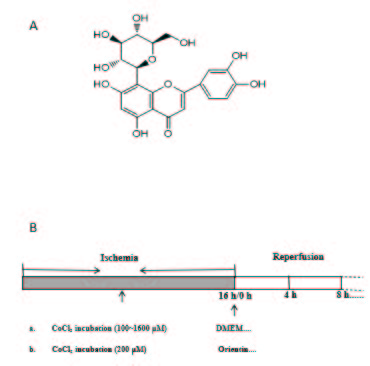Orientin Protects BV-2 Microglial Cells against Hypoxia Reoxygenation Injury through Inhibiting Oxidative Stress
DOI:
https://doi.org/10.5530/fra.2023.2.11Keywords:
Oarientin, Oxidative stress, Hypoxia reperfusion injury, BV-2 microglial cells, Nrf2Abstract
Background: Oxidative stress is one of the pivotal pathogenesis of ischemic stroke. Orientin, a compound extracted from plants, has been previously reported to have antioxidant activity that was exploited in various diseases. The objective of this study was to focus on the potential therapeutic effects of orientin on cobalt chloride (CoCl2 )-induced Hypoxia Reoxygenation (HR) injury in BV-2 microglial cells and to explore the possible mechanisms. Materials and Methods: The optimum protective condition of orientin on BV-2 microglial cells after HR injury was evaluated by the viability of cells measured by Cell Counting Kit-8 (CCK-8). Afterwards, functions of Superoxide Dismutase (SOD) and Catalase (CAT) as well as the content of Glutathione Peroxidase (GSH-PX) were measured by corresponding kits. Activation of Nrf2 pathway was assayed by western blotting. Results: Our study demonstrates that the viability of HR injured BV-2 microglial cells was improved significantly after incubation with orientin (40~100 μg/mL) for 8 hr. Furthermore, orientin was found to increase the nuclear translocation of Nrf2 protein in BV-2 microglial cells and was shown to promote antioxidant enzyme activities and enhance the expression of HO-1 and NQO1. Conclusion: Taken together, Results of our study indicate that orientin protect BV-2 microglial cells against HR injury induced by CoCl2 , and this protection is associated with the inhibition of oxidative stress through the activation of the Nrf2 signaling pathway.
Downloads
Metrics





